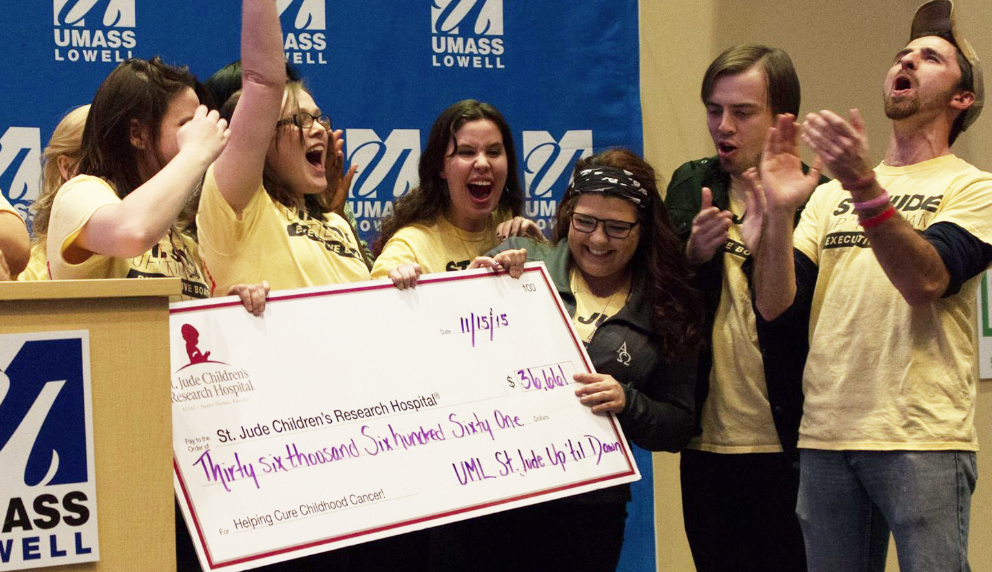(Image from UMass Lowell’s 2015 Up till’ Dawn St Jude event/ Courtesy of Greg Mahan)
Ashley Rose Rivera
Connector Editor
September mark’s childhood cancer awareness month. Childhood cancer is the leading cause of death by disease for children in the United States. . While developments in cancer treatments have increased survival rates for children, they can lead to chronic health conditions and struggles with learning, often due to the harsh nature of these treatments.
From initiatives that UMass Lowell takes part in like St. Jude’s Up ’til Dawn all-night celebration, to Alex’s lemonade stand, strides are being made to make research and treatments for childhood cancer more visible on the front lines. Through research, innovative treatments are being made to combat cancer of all forms, and some of this research can be applied to childhood cancers as well.
“I study the nervous system. In order to study the nervous system, you need neuronal cells to work with,” said Dr. Thomas Shea, a professor of biological sciences at UMass Lowell, recounting his research into neuroblastoma. “You can watch the processes that help the nervous system develop, and its errors in those processes that promote neuroblastoma.”
There are several types of childhood cancers that exist, and neuroblastoma can be one of them. Neuroblastoma is a cancer that develops from immature nerve cells in the body and is the most common type of cancer found in infants.
“One of the ways to study nerve system development is to use neuroblastoma cells… that brought me to use of neuroblastoma…With a professor that’s retired, Nicolosi…he developed nano-particles that were attracted to neuroblastoma…if we have a nanoparticle with poison in it and the cancer cells gobble it, we can target it…so, that was a thing we did,” said Shea.
Dr. Peter Gaines, a professor of biology at UMass Lowell, also recounts different ways people can contribute/do their part when it comes to the cancer fighting efforts. “For kids it’s perfect because they’re smaller…everybody should be tested and put into a bank of potential donor situations, because you can help these kids who have leukemia,” said Gaines. “We can give them bone marrow transplants.”
Childhood Leukemia is a cancer of the white blood cells and is the most common form of cancer in children and teens.
“A lot of times with these childhood cancers, [doctors] can use the stem cells in umbilical cords,” Gaines said. “They’ve actually done transplants with umbilical cords…by understanding these diseases we can do very simple things like writing a consent that says I donate my umbilical cord, and it might help somebody. That’s why this awareness is so good.”
As more attention and focus is allocated towards childhood cancer research, safer treatments are discovered. With the potential of longer life spans for children, and an overall better quality of life for childhood cancer survivors, Childhood cancer awareness month attempts to educate people on what they can do to fight for the cause.




